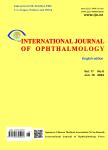The transcorneal electrical stimulation as a novel therapeutic strategy against retinal and optic neuropathy: a review of experimental and clinical trials
The transcorneal electrical stimulation as a novel therapeutic strategy against retinal and optic neuropathy: a review of experimental and clinical trials作者机构:Department of OphthalmologyOphthalmology & Visual Science Key Lab of PLAGeneral Hospital of Chinese PLA Department of Clinical Aerospace Medicinethe Fourth Military Medical University Department of Neurosurgery and Institute for Functional Brain DisordersTangdu Hospitalthe Fourth Military Medical University
出 版 物:《International Journal of Ophthalmology(English edition)》 (国际眼科杂志(英文版))
年 卷 期:2016年第9卷第6期
页 面:914-919页
核心收录:
学科分类:1002[医学-临床医学] 100212[医学-眼科学] 10[医学]
基 金:Supported by the National Key Basic Research Program of China (973 Program No. 2013CB967001)
主 题:transcorneal electrical stimulation therapeutic strategy retinal disease optic neuropathy
摘 要:Transcorneal electrical stimulation (TES) is a novel therapeutic approach to activate the retina and related downstream structures. TES has multiple advantages over traditional treatments, such as being minimally invasive and readily applicable in a routine manner. Series of animal experiments have shown that TES protects the retinal neuron from traumatic or genetic induced degeneration. These laboratory evidences support its utilization in ophthalmological therapies against various retinal and optical diseases including retinitis pigmentosa (RP), traumatic optic neuropathy, anterior ischemic optic neuropathy (AION), and retinal artery occlusions (RAOs). Several pioneering explorations sought to clarify the functional mechanism underlying the neuroprotective effects of TES. It seems that the neuroprotective effects should not be attributed to a solitary pathway, on the contrary, multiple mechanisms might contribute collectively to maintain cellular homeostasis and promote cell survival in the retina. More precise evaluations y/a functional and morphological techniques would determine the exact mechanism underlying the remarkable neuroprotective effect of TES. Further studies to determine the optimal parameters and the long-term stability of TES are crucial to justify the clinical significance and to establish TES as a popularized therapeutic modality against retinal and optic neuropathy.



